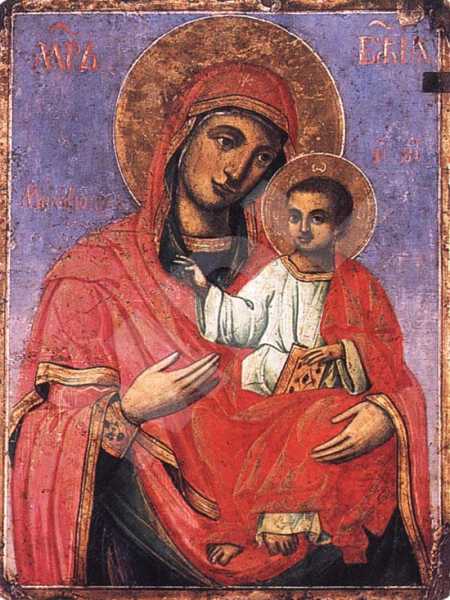The Virgin Glycophilousa
Type:
Icon
Period:
The beginning of the
19 century
Toma Vishanov-Molera, born around 1750, painter of icons and murals, founder of the Bansko school of art. He grew up in the family of the clergyman Vishan. Around 1765 he went to Vienna, where he studied painting. It is not known who were his teachers there or when he returned to Bansko. His fellow villagers called him the Moler, Molera(from German Maler ‘painter’), whence the entire family's surname. Under the influence of the European 18th century art Toma Vishanov painted his works in a new manner, unknown until then in Orthodox art. The figures are realistic, vivid, expressive. Toma Vishanov is an innovator in the early period of Bulgarian Renaissance. His ideas on art were not understood and at first were rejected by his contemporaries. His work has not been studied extensively. He died after 1811 in Bansko.
Dimmensions (cm):
25.5
/ 20
/ 2.8
Location
Country: Bulgaria
Province: Kustendil
Town: Boboshevo
Church: The Assumption of the Virgin
Source
Country: Bulgaria
Province: Kustendil
Town: Boboshevo
Church: The Assumption of the Virgin
Description
A traditional iconography on the theme. The Holy Mother of God is portrayed in waist length. With her left arm she is holding the Infant and with her right hand she is pointing at him. Christ is portrayed seated, holding a closed book in his left hand and blessing with his right hand.
Iconographical technique: Tempera
The varnish cover is applied thinly and evenly. The gilding on the aureoles is with gold-leaf.
Base material: Wood
The icon's base is a one-piece softwood panel, with two inserted beams. The ground coat is of plaster, laid thinly and evenly.
State, restoration traces and comments
There are traces of overpaintings with white bronze along the frame enclosing the icon.


